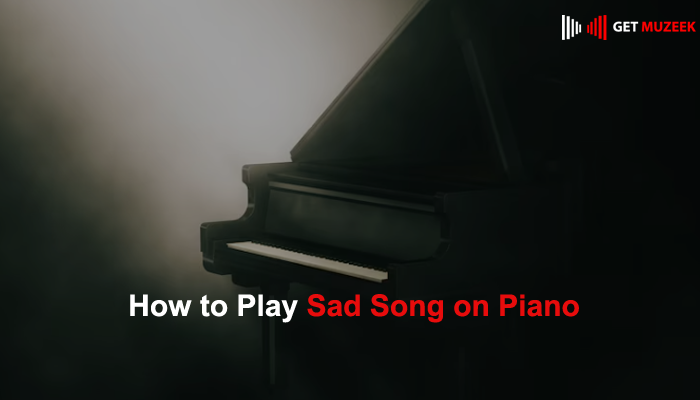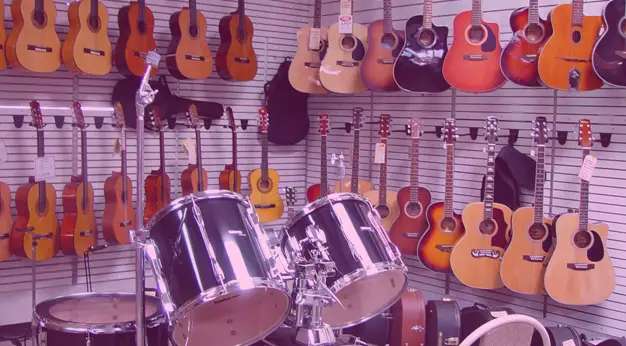
Playing sad songs on the piano can be a deeply emotional and cathartic experience. The piano’s melancholic melodies have the power to touch hearts and evoke a range of emotions.
In this comprehensive guide, we will explore the techniques and strategies to master playing sad songs on the piano. Whether you’re a beginner or an intermediate pianist, this article will provide you with the knowledge and skills to express your emotions through the keys.
Why Play Sad Songs on Piano?
Playing sad songs on the piano allows us to connect with our emotions in a unique way. These somber melodies provide an outlet for self-expression and can be therapeutic during times of sorrow or introspection.
Sad songs have been an integral part of music throughout history, with composers often using minor keys and haunting melodies to evoke deep emotions.
By learning to play sad songs on the piano, you can tap into this rich musical tradition and create your own heartfelt compositions.
Getting Started
Before delving into playing sad songs, it’s essential to have a basic understanding of piano playing. If you’re a beginner, consider taking some introductory piano lessons to familiarize yourself with the instrument and its fundamentals.
Once you have a grasp of the basics, you’ll be better equipped to tackle the emotional nuances of sad songs.
Choosing the Right Key
The key of a song sets the overall tonal framework and greatly influences its emotional impact. When it comes to playing sad songs on the piano, certain keys are particularly effective in conveying melancholy and sorrow.
D minor, E minor, and A minor are popular choices for sad compositions due to the inherent emotional qualities of their scales. Experiment with different keys and find the one that resonates most deeply with the mood you want to convey.
Emphasizing Dynamics
Dynamics play a crucial role in expressing the emotions within a sad song. By varying the volume and intensity of your playing, you can create a more poignant and evocative performance.
Start softly, allowing the notes to gently fade in, and gradually increase the volume to highlight emotional peaks within the composition. Explore the full range of the piano, from delicate pianissimo to powerful fortissimo, to bring out the desired emotions.
Expressive Techniques
To truly capture the essence of a sad song, incorporate expressive techniques into your playing. Here are some techniques that can enhance the emotional impact of your performance:
- Legato: Achieved by smoothly connecting the notes, legato playing creates a seamless and flowing melody, perfect for conveying a sense of longing or sorrow.
- Rubato: This technique involves subtly stretching and compressing the timing of certain notes or phrases to add a personal touch and create an expressive, melancholic effect.
- Vibrato: Although commonly associated with string instruments, you can also incorporate a gentle vibrato into your piano playing. By slightly oscillating the pitch of sustained notes, you can infuse them with an emotive quality.
- Pedaling: Effective use of the sustain pedal can create a beautiful resonance, especially in slower, more contemplative passages. Experiment with pedaling techniques to achieve the desired sustain and depth.
Building Emotional Phrases
To effectively convey the emotions of a sad song, it’s important to focus on building emotional phrases within your playing. Think of each phrase as a miniature story, with a beginning, middle, and end.
Begin softly, gradually increase the intensity and volume as the phrase progresses, and then gently release the tension, creating a sense of resolution. This ebb and flow of emotions within individual phrases will captivate your listeners and evoke a deep emotional response.
Adding Ornamentations
Ornamentations, such as trills, grace notes, and turns, can add subtle nuances and embellishments to your sad piano compositions. Used sparingly and with intention, these ornamentations can heighten the emotional impact and bring a touch of elegance to your playing.
Experiment with different ornamentations and find the ones that resonate with the particular mood of the song you’re playing.
Exploring Melancholic Chord Progressions
The choice of chord progressions can significantly contribute to the overall sadness of a piece. Minor chords and progressions that incorporate descending intervals often evoke a melancholic atmosphere.
Experiment with progressions such as i-iv-V, vi-IV-I-V, or ii-V-I in a minor key to create a mournful ambiance. Don’t be afraid to experiment and modify existing progressions to suit your artistic vision.
Incorporating Dynamics in Chordal Playing
When playing sad songs on the piano, chordal playing is an essential skill to master. By skillfully incorporating dynamics into your chord progressions, you can create a more engaging and emotionally charged performance.
Experiment with playing certain chords softly while emphasizing others with a stronger touch. This dynamic interplay between chords will add depth and complexity to your sad piano compositions.
Frequently Asked Questions
Q: How can I effectively convey emotions while playing sad songs on the piano?
A: To convey emotions effectively, focus on dynamics, expressive techniques, and building emotional phrases within your playing. Vary the volume, utilize legato playing, incorporate rubato, and experiment with pedaling techniques. Remember to build emotional phrases with a beginning, middle, and end.
Q: Are there any recommended sad songs for beginners to practice on the piano?
A: Absolutely! For beginners, songs like “River Flows in You” by Yiruma, “Comptine d’un autre été” by Yann Tiersen, or “My Immortal” by Evanescence are great starting points. These songs have emotive melodies and manageable technical challenges.
Q: Can I add my own improvisations to sad songs?
A: Absolutely! Improvisation is a fantastic way to add a personal touch to any piece, including sad songs. Experiment with different improvisational techniques and let your emotions guide you as you explore the piano’s expressive capabilities.
Q: How can I enhance my understanding of sad song composition and theory?
A: Studying music theory and composition can significantly enhance your understanding of sad song composition. Take online courses, read books on music theory, and analyze the works of renowned composers who specialize in composing sad music, such as Frédéric Chopin or Erik Satie.
Q: What are some techniques to overcome performance anxiety when playing sad songs in front of an audience?
A: Performance anxiety is common but can be managed. Practice regularly to build confidence, visualize successful performances, and employ relaxation techniques, such as deep breathing or meditation. Gradually expose yourself to performing in front of others, starting with small gatherings or open mic nights.
Q: Can you recommend any resources or sheet music for sad songs on the piano?
A: There are numerous resources available online for sheet music and tutorials. Websites such as musescore.com, sheetmusicplus.com, and virtualsheetmusic.com offer a wide selection of sad songs for the piano. You can also explore piano forums and online communities for recommendations and suggestions from fellow pianists.
Conclusion
Playing sad songs on the piano is a powerful means of self-expression and emotional release. By incorporating the techniques and strategies discussed in this guide, you’ll be well on your way to mastering the art of playing sad songs.
Remember, the key to conveying emotions effectively lies in dynamics, expressive techniques, building emotional phrases, and choosing the right chord progressions. With practice, patience, and a heartfelt connection to the music, you’ll be able to create moving and evocative performances that touch the hearts of your audience.
Related Posts:
- How to Play G on the Piano
- How to Play Wake Me up Avicii Guitar Chords
- How to Play Hallelujah Chords Guitar: A Comprehensive Guide
- How to Play Eight Days a Week Chords
- How to Play Taylor Swift “You Belong With Me” Chords



